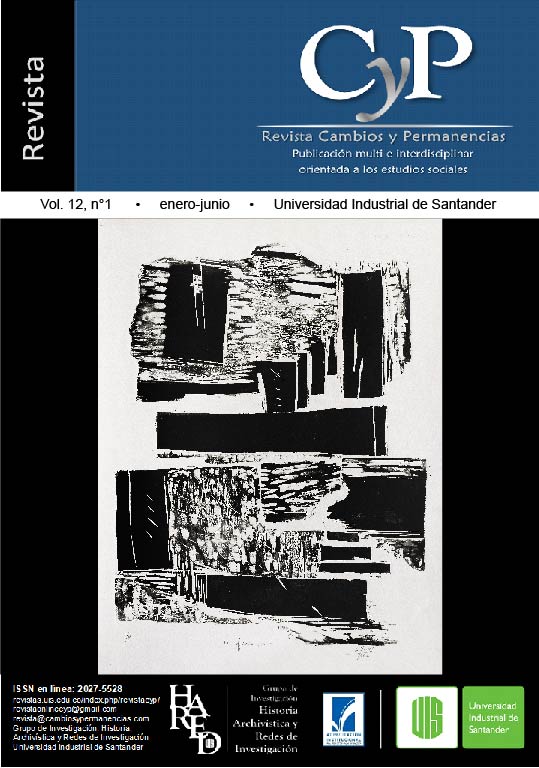Violence and resistance in Jewish children's and young adult literature about the Shoah
Published 2021-06-28
Keywords
- Shoa,
- Jewish resistance,
- representation of violence,
- Jewish self-representation,
- children’s violence
- National Socialism ...More
How to Cite
Abstract
This article focuses on representations of violence in Jewish children's and young adult literature about National Socialism, representando Jewish resistance through violence. This is an aspect that has received little attention to date, and is also comparatively underrepresented in children's literature. Jewish resistance employing violence is subject to a strong taboo, which is particularly evident in German-language children's and young adult literature. The representation and function of violence are examined using three texts by Juri Suhl (Of Life and Death, Auf Leben und Tod), Uri Orlev (The Man from the Other Side, Der Mann von der anderen Seite) and David Safier (28 Long Days). The texts were written at different times and published in different languages, but all are devoted to violent resistance against National Socialism by the Jewish partisan movement and the Warsaw ghetto uprising, respectively. The analysis examines narrative strategies to mitigate the impact of violence, such as embedding it in the genre conventions of adventure literature or its deliberate use as a means of building suspense, as well as the revenge motif and genre-specific motivational patterns and the depiction of sexual violence in Safier's novel. Connected to this representation is the interpretation of the historical events narrated and thus the positioning within a narrative of Jewish history and (self-)representation in children's and young adult literature.
Downloads
References
Berg, M. (2019). Wann wird diese Hölle enden? Das Mädchen, das das Warschauer Ghetto überlebte. Zürich, Suiza: Orell Füssli.
Bock, D. (2017). Literarische Störungen in Texten über die Shoah. Imre Kertész, Liana Millu, Ruth Klüger. Frankfurt am Main, Alemania: Peter Lang.
Edelman, M. (1993). Das Ghetto kämpft. Berlin, Alemania: Harald-Kater-Verlag.
Fuks, Kh. L. (2015). M. Gildenman (1898 – August 10, 1957), Yiddish Leksikon. Zugang über http://yleksikon.blogspot.com/2015/08/moyshe-gildenman.html
Gildenman, M. Shoah Resource Center, The International School for Holocaust Studies. Recuperado de https://www.yadvashem.org/odot_pdf/Microsoft%20Word%20-%206288.pdf
Grossman, H. (1988). The Underground Army: Fighters of the Bialystak Ghetto. New York, EE.UU.: Holocaust Library.
Grymes, J. A. (2014). Violins of Hope: Violins of the Holocaust. Instruments of Hope and Liberation in Mankind’s Darkest Hour. New York, EE.UU.: Harper Collins.
Lustiger, A. (2002). Lassen wir uns nicht wie die Schafe zur Schlachtbank führen. Der Widerstand der Juden in Europa. In Wir werden nicht untergehen. Zur jüdischen Geschichte (pp. 180-188). München, Alemania: Ullstein.
Lustiger, A. (2003). Der Aufstand im Warschauer Ghetto. In: H. Erler, A. Paucker y E. Ludwig Ehrlich (Eds). „Gegen alle Vergeblichkeit“. Jüdischer Widerstand gegen den Nationalsozialismus (pp. 297-307). Frankfurt am Main & New York, Alemania: Campus.
Meuser, M. (2002). ‚Doing Masculinity‘ – Zur Geschlechtslogik männlichen Gewalthandelns. In R. Dackweiler y R. Schäfer (Eds.), Gewalt-Verhältnisse. Feministische Perspektiven auf Geschlecht und Gewalt (pp. 53-78). Frankfurt am Main, & New York, Alemania: Campus.
Orlev, U. (2008). Der Mann von der anderen Seite. Weinheim & Basel: Beltz & Gelberg.
Safier, D. (2020). 28 Tage lang. Hamburg, Alemania: Rowohlt.
Steinbach, P. (2016). Zur Kontextualisierung des Widerstands von Juden. In: J. Schoeps, D. Bingen und G. Bosch (Eds.), Jüdischer Widerstand in Europa (1933-1945) – Formen und Facetten (pp. 17-31). Oldenburg, Alemania: De Gruyter.
Strobl, I. (2003). Jüdische Frauen im Widerstand im besetzten Europa. In: H. Erler, A. Paucker y E. L. Ehrlich (Eds.), „Gegen alle Vergeblichkeit“. Jüdischer Widerstand gegen den Nationalsozialismus (pp. 261-277). Frankfurt am Main, & New York, Alemania: Campus.
Suhl, Y. (1967). They Fought Back: The Story of Jewish Resistance in Nazi Europe. New York, EE.UU.: Crown Publishers.
Suhl, Y. (1993). Auf Leben und Tod. Würzburg, Alemania: Arena.

